Bleeding the brakes
Fill with fresh brake fluid
Use only fresh DOT 3 or DOT 4 brake fluid.

Bleeding from the hydraulic drive of the working brake system is necessary to remove air, which significantly reduces braking efficiency.
Air can get into the hydraulic drive due to depressurization of the system during repairs, replacement of individual components or brake fluid.
The presence of air in the drive is indicated by an increased stroke of the brake pedal and its “softness”.
Before bleeding, check the tightness of all brake drive units and their connections.
In the process of bleeding the brake system, the level of the brake fluid should not fall below the middle of the reservoir of the hydraulic drive of the service brake system.
Bleed the brakes in the following order:
- 1 - rear right brake cylinder;
- 2 - rear left brake cylinder;
- 3 - front right brake caliper;
- 4 - front left brake caliper.
Raise the car.
Disconnect the brake lines from the master cylinder.
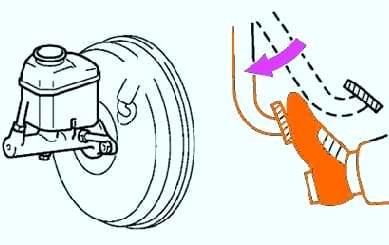
Slowly press and hold the brake pedal (fig. 2).
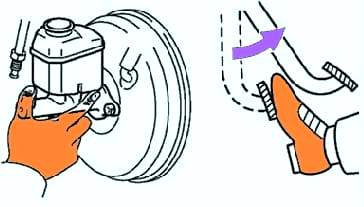
Plug the brake cylinder outlets with your fingers and release the brake pedal (fig. 3).
Repeat the steps three to four times.

Connect the vinyl tube to the wheel brake cylinder bleeder port
Start bleeding from the wheel brake cylinder that is farthest from the master cylinder.
Depress the brake pedal several times, then, while holding the pedal depressed, loosen the bleeder screw.
When the brake fluid stops coming out, tighten the fitting, then release the brake pedal. Tightening torque: 8.3 Nm.
Repeat bleeding operations until no more air bubbles appear in the escaping brake fluid.
Repeat the bleeding procedure for each wheel.
Check the brake fluid level in the reservoir and top up if necessary.
Bleeding ABS/VSC system modulator
Also bleed the ABS/VSC pressure modulator.
Remove the cover of the modulator reservoir
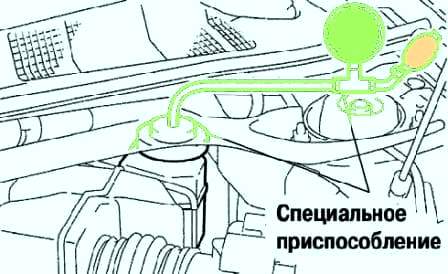
Attach special device 09992-00242 instead.
Connect the vinyl tubing to the modulator drain plug (fig. 5).
Bleed the system by applying 98.1 kPa pressure to the modulator.
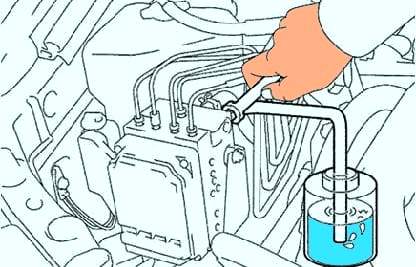
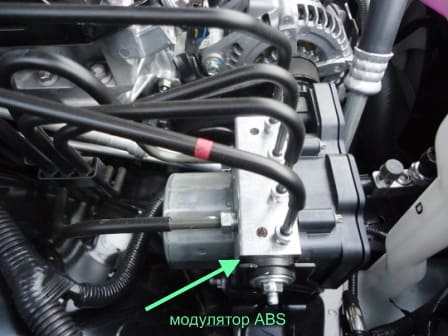
Loosen the bleed plug and check for air escaping from the vinyl tube (fig. 6)
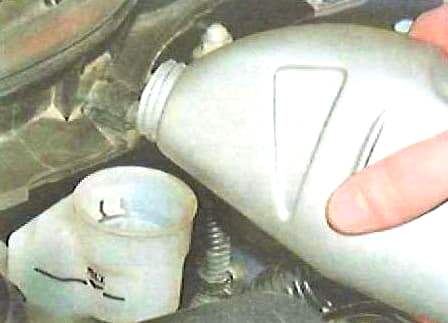
Check the brake fluid level in the modulator and add fluid if necessary











